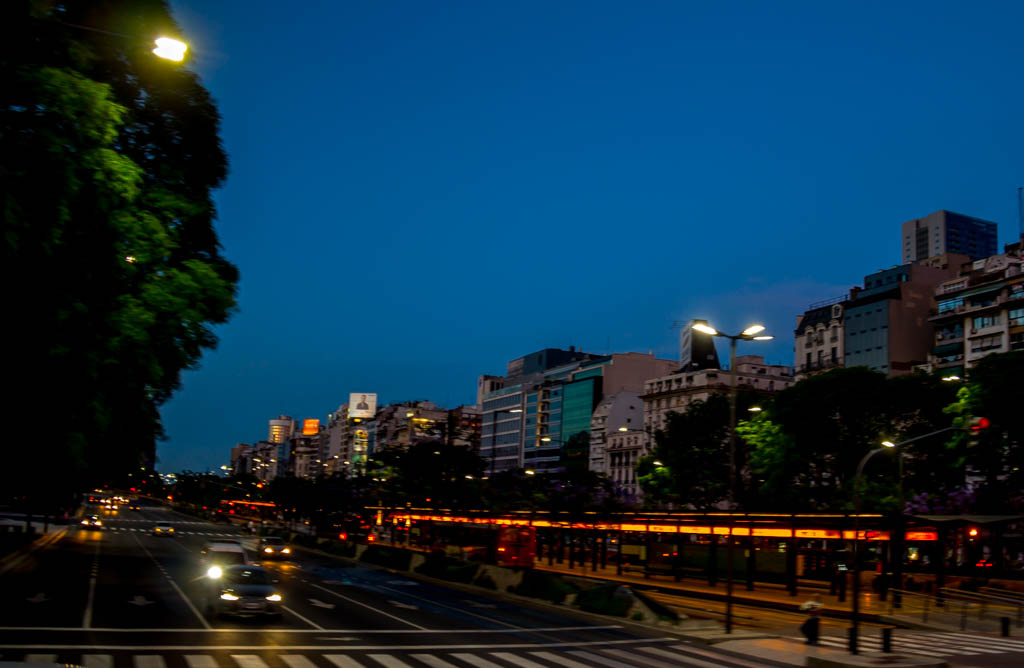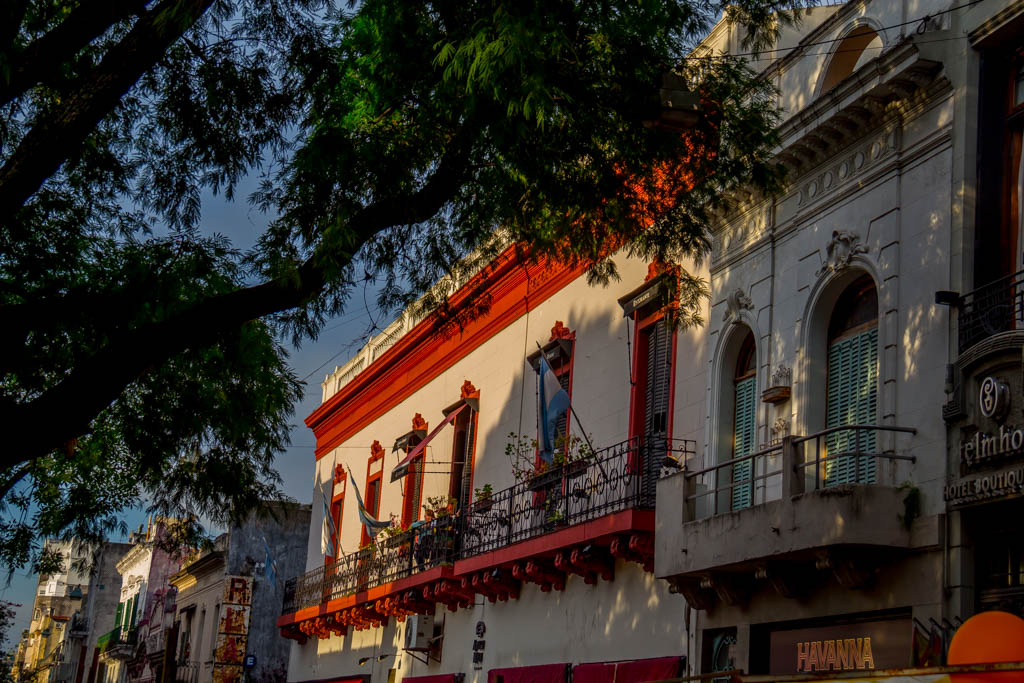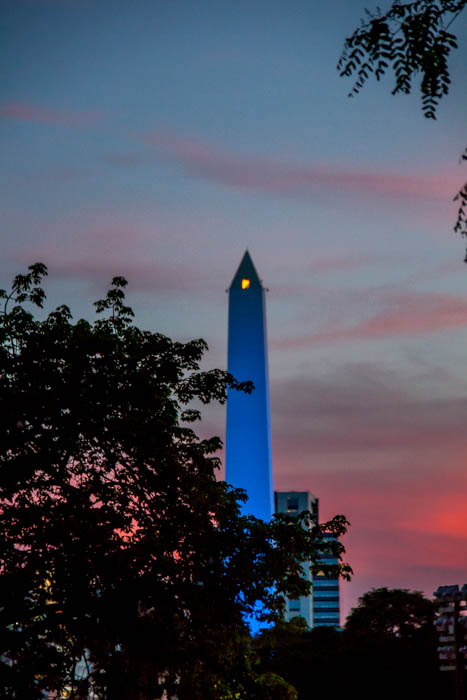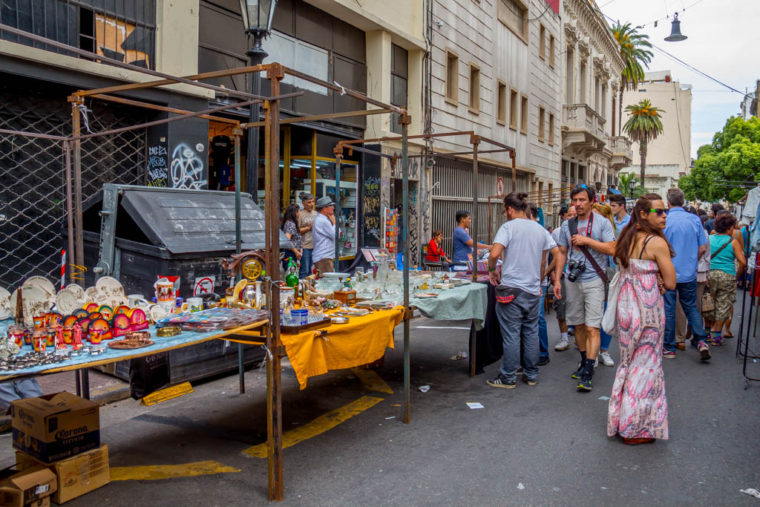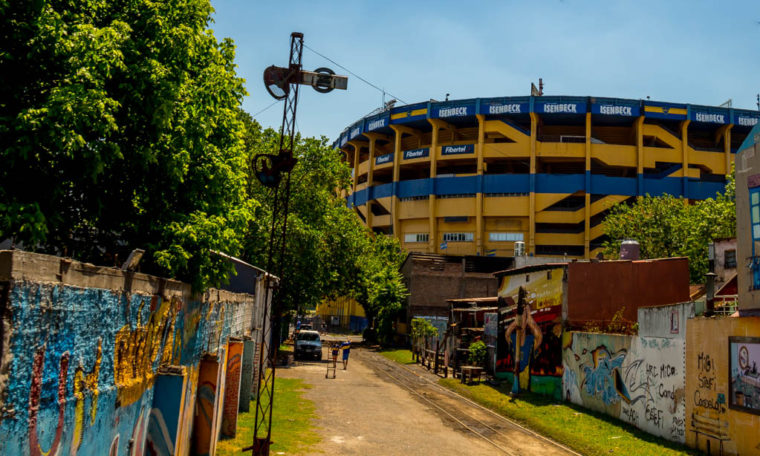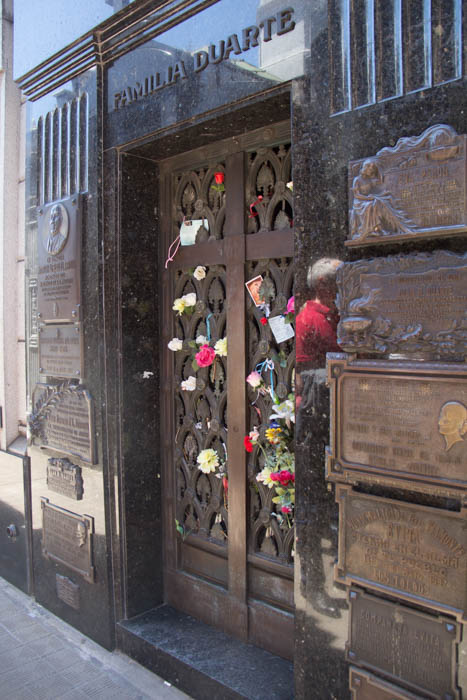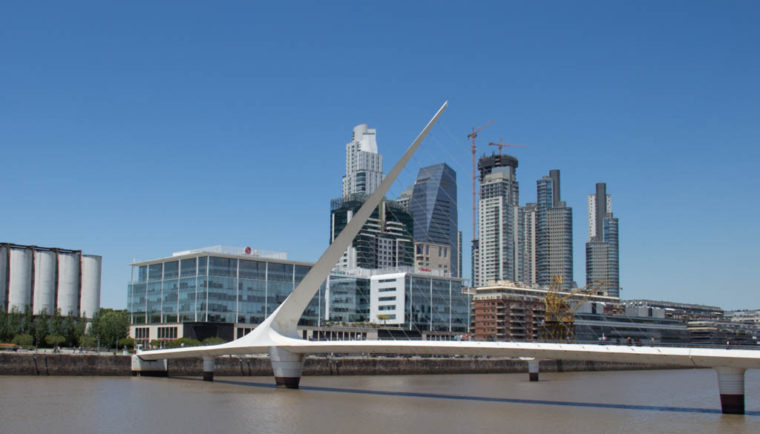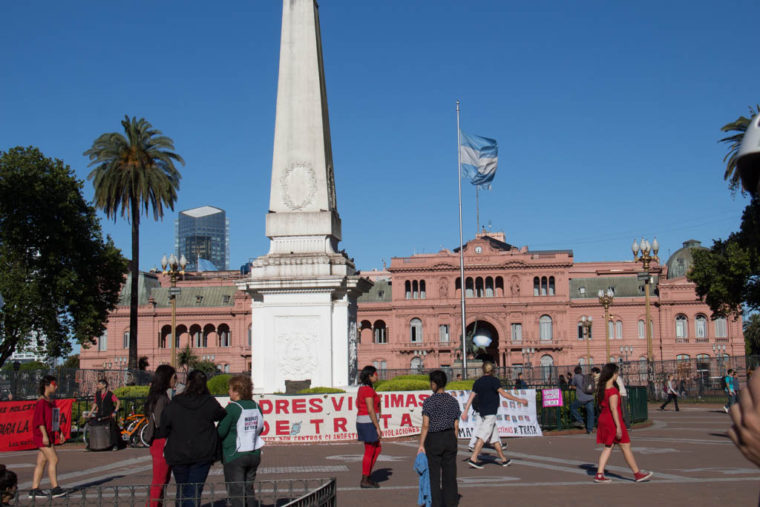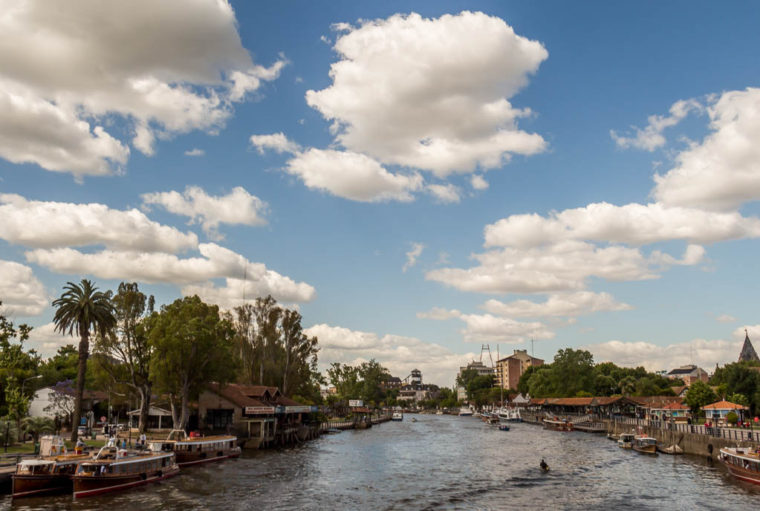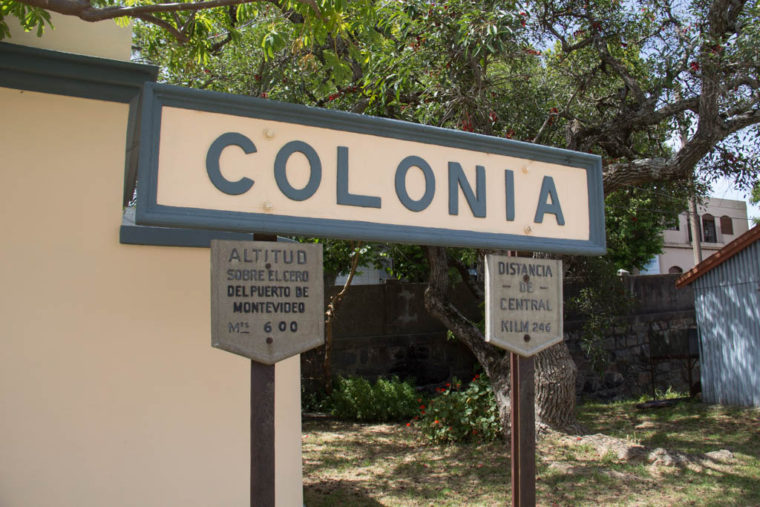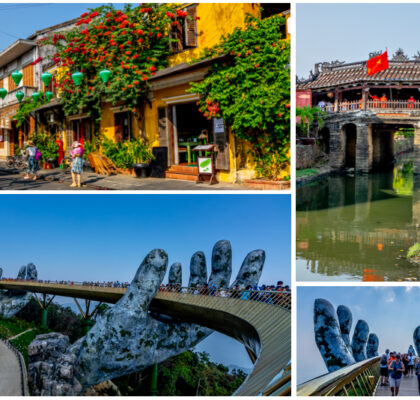I had been looking forward to see the pampas north of Buenos Aires. but although I had a seat at the front of the bus, I saw nothing. It rained just so much the whole way that we could not see anything. It still rained when we reached the outskirts og Buenos Aires but just as we came to the Retiro bus terminal, it stopped and when I got out on the other side of the building the sun was actually coming through. Welcome to Buenos Aires☀.
Because of my border problems in Iguazu, I forgot all about changing money, so here was I, in Buenos Aires on a Sunday afternoon with no Argentinian Pesos – not good, it is a bad time to be short of cash. I looked for ATM’s, asked a couple of people but the only thing they could tell me, was that the Retiro area was not safe 👎. Taxis did not take credit cards or USD so what to do. i asked in a Restaurant and kept asking the taxidrivers and finally one agreed to take my USD and for a heavily overprice compared to pesos, he agreed to take me to my apartment. It was not that far away but walking with a suitcase on the streets are never easy, so worth the money.
Just before I left my hotel in Brazil, I had received a message from my host, that I could go directly to the apartment as it was ready. I had also received the code to the door so no need for a key. At the building I was welcomed by my guardian Angel for the next week. He was guarding the door and his name was actually Angel😀.
A very nice elderly man that was sitting there every afternoon and evening, so although being all on my own, he was always there to chat with me and he always send me out of the door saying; Please be careful.
Being on my own was really nice though. The apartment was great, I had a little balcony with a view of the Obelisk and all the entertainment happening regularly in the square in front of it. (It was also nice to have a washing machine and to get my cloth washed properly)👍
The apartment was very close to everything with lots of restaurant, cafes, supermarket etc. so a very convenient place to stay.

Plata River with Argentinas national tree
Sightseeing
Buenos Aires or in short BA is a big city so to help me get around, I used the Hop On Off bus and a bike tour to see as much as possible. Once you get familiar with the areas like San Telmo, La Boca, Palermo, Recoleta, Puerto Madero, it becomes a lot easier. The street system is easy as most streets are like a grid but to get really familiar with each area, I would have to spend a lot more time in the city. There are many more areas than mentioned above, but as a tourist it is those who are interesting.
I don’t know, if I will call it a beautiful city but it sure has a lot of beautiful places, buildings, parks, waterfronts and tons of statues and monuments. It is also a city with a huge amount of museums, so if you want to explore it all, you need a lot of time. The city and almost all streets have a lot of trees and when I visited, it was the Jacaranda that made a big impression all blooming in blue. Had I been there a little earlier, it might have been yellow or red depending on which tress would be blooming at the time.
The Hop On and Off buses are a great way to get around but with such a big city, I is was thinking that maybe one day or a 24 hour ticket would not be enough, I asked for the price for the 48 hour ticket but got the reply that I should not do that, as it would rain all day the next day. I have never tried to get that answer before, I even asked if she was sure as it was not the forecast I had seen, and the reply was yes. As I was not 100 % sure I wanted to be on the bus for 2 / 3 days I bought 24 hours. If you get on the bus before the 24 hours runs out, you can always get a little more, so I did that to see the rest of the city. It was not the only time I was told it would rain tomorrow but It did not rain that day or any other of the remaining days I spent in BA.
After the bus tours, I had a good feeling for the city and the differences between each area. Knowing a little about the city was also a big help on my bike tour later in the week and that tour was really great, There are many bike paths in the city and the cars seems to have gotten used bikes, so it felt reasonably safe. I was also very lucky with my guide. He had just graduated from university in history, and he loved to talk about the city. A lot of my stories in this blog are from him. .
I also went to the Tigre Delta, a one day tour to Uruguay, and yes I did also see a Tango Show. I went to a formal one as the more informal – Melangas – don’t start until midnight.
San Telmo
An area south of downtown, where you will find old colonial style houses The street La Defence is running all the way through the area and are in my mind the nicest street in the city. It has cobble stones, lots of antique shops and plenty of the colonial style houses. On Sundays it is turned in to a market place from one end to the other with people selling all kind of things. A lot of stuff you will see in market places around the world but also a lot I had never seen before. To really see the street you will have to go an a different day though as all the market boots covers too much to really see the street.
La Boca
The area is close to the old port south of the center, and it was here that the first immigrants arrived. Many of them were Italians from Genoa, which has left its mark on the district. Today the area is a poor area, but the city have transformed a small area with primarily the pedestrian street Caminito for tourists. Caminito, after the name of a popular piece of tango music.
The street consists of very colorful houses, a theater, museum, plenty of restaurants and souvenir shops, and if you’ve always wanted to be photographed with a tango dancer, this is the place. The colorful houses arose out of necessity, since the original inhabitants did not have any money, instead, the houses were painted with whatever color they could get from the ships in the harbor and this has now become an attraction.’
Most familiar in the area is the football club Boca Juniors. As with other big clubs merchandise is a great thing, and can be purchased in several shops next to the stadium, which is known as La Bombonera, – Spanish for chocolate box.
Palermo
Is one of the largest areas in Buenos Aires and is divided into areas such as Palermo Soho, Hollywood, Viejo (old), and it is a very mixed area. There are areas for rich people with great big houses, areas with small houses surrounded by warehouses, which similar to other cities has become trendy and now has nice shops and cafes. Along the river there are parks, museums, and many institutions. This is where you will find the Botanical Garden, the Zoo, a Japanese Garden and parks people use for sports. Furthermore, there is a sea of monuments received from various countries around the world located in the area.
Palermo is north of downtown, and further north the area Nunez is home to football club River Plate. It was originally placed in La Boca, and there is still a lot of rivalry between the two old clubs. Their matches are referred to as “superclassico” and figures on lists as must see experiences. I had to settle briefly, following a River Plate struggle, with a disappointed taxi driver. It was not a match against Boca Juniors though.
Recoleta
It is a Downtown area, where there are a lot of hotels and large houses also used for embassies. Best known in the area is the large Recoleta cemetery. For tourists, not least because it is here Evita or Eva Peron is buried. Originally, she was planned to be buried in a huge mausoleum, but Juan Peron was deposed and fled before it was finished. In the years of dictatorship from 1955 – 1973 where Juan Peron lived in exile abroad, Juan and Eva Peron was not to be mentioned, and with the help of the Vatican they hided Evita’s embalmed corpse in Milan. Juan Peron managed to get it back and when he became president again in 1973, he brought Eva Peron back to Argentina, where she was buried under her maiden name Eva Duarte.
A large portion of Argentines prominent people are buried in the cemetery and my guide on the bike tour thought it was funny that we say “rest in peace”. Here all the enemies from different periods are buried next to each other.
Puerto Madero
The area is also called Puerto Madero Waterfront, and Madero is the name of a man who was responsible for the construction in 1887 – 1897. It was an expensive port to establish, but unfortunately it was only used for a few years before it was too small. The city then had to build a new port which is still in use. They actually used a project they had rejected when they went ahead with the Madero project😂.
After many years of decay and several attempts to revive Mandero port, they have now succeeded. It is a thriving area of intense activity and plenty of restaurants. Up through the 90ties – one hundred years after it was build – a lot of new buildings were finished – a big Hilton hotel, cinemas, theaters, and cultural centers. The existing buildings in the harbour were rebuilt and the area is today a very attractive place to live.
It is also where you find the bridge called the Women’s Bridge. Someone thought the city needed to pay more attention to women so they dedicated the bridge and named a lot of new streets after women. The bridge design is an image of a leg dancing Tango.
Streets and Squares
Around the city there are a lot of large and small squares. In front of the presidential palace Casa Rosada (for those who have seen the movie Evita, yes this was where she kept her speech) in Downtown Buenos Aires is Plaza de Mayo.
The square is used for political demonstrations, and it was here a few women started Mothers of the Plaza Mayo. An association of mothers who lost their children during the military regime between 1976 and 1983. They wanted to know what had happened to there sons and wearing a white scarf, they began to walk around on the square in silence once a week. The organization and the strength it got, was inspiration to other organizations and to this day, there are still marches taking place each week albeit not against the Argentine government, which is not considered responsible for the missing children. The organization Grandmothers of the Plaza del Mayo are still looking for “stolen” children of women who were killed during the war.
The site has symbolic white scarves painted on the ground, and I have now seen them on squares in several other cities.
The day we passed the place on the bike, there was another protest. This time against human trafficking.
Buenos Aires has the widest street in the world: Avenida 9 de Julio – this is the street with the Obelisk. I had to cross the street to get to the nearest supermarket, and it takes two to three stops for red light to come all the way. Even on a bike, you have to stop at a time. There are up to seven lanes in each direction with bus lanes in the center and a parallel street on each side, and each section has its own light, so it takes a little time.
A few other names you will surely encounter is the Plaza San Martin close to Retiro and the famous shopping street Florida
Tigre
North of Buenos Aires where the river Plata becomes a delta, lies the small picturesque city Tigre. It is pronounced Tiger and comes from tigers or rather jaguars that once existed in the area. It is a very quiet and relaxed city, and if you need to get away from the noise of BA, is a good place to go. The city’s attraction are the boat trips to or around the islands in the delta, but the city also have a naval museum, nice antique shops, parks and of course plenty of restaurants and cafes. There is even a hop on and off the bus. The cheapest way to get to Tigre is on the train from Mitte station. A return ticket costs only 12 pesos. It takes about an hour and there are trains every 20/30 minutes. From the station, you can quickly go down to the river and go on a boat trip in the delta. People live on these islands, although they do not have clean water. However, they can use the water from the river, except for cooking and for drinking. The water in the river comes from the north in South America and brings a lot, which makes the color brown and the water undrinkable. There are no bridges to any of the islands in the delta, so the only way to get there is by boat,
Besides the train from the station Mitte, you can change to the Tren de la Costa (Coast Line) at Maipu Avenue Station anf get a little more picturesque tour.
Another way to see the city is to take a tour back and forth by boat from Buenos Aires, or you can take a bike ride, where you bring your bike on the train.
Colonia – Uruguay
On the other side of the river Plata is Uruguay. It takes about about three hours to go to Monterey while a trip to Colonia del Sacramento only takes an hour with a catamaran ferry. This makes it possible to go on a day trip and enjoy a lunch in Colonia. The tourist attraction is the old city from 1680, behind a wall and out to the river. It is UNESCO World Heritage and consists of several houses in fairly good condition, cobblestone streets, a lighthouse and ruins of a monastery. In the cozy Plaza Major’s are cafe and restaurants where you can sit under shade of the trees.
To get to Uruguay it is necessary to go through immigration but they have made it as easy as possible, as it was only required once each way. Control of both countries were made at the same time – by two different people though – before boarding the boat, so no check upon arrival on the other side.
Transport
With my apartment I also got a SUBE card. It is a card used for payment of the local trains, metros and buses, so I was soon ready to go. I never tried the buses though. There were so many to choose from, and it seemed a bit overwhelming to find the right one, so I took the metro instead. I only needed one line, and there was a stop very close to my apartment, so I just had to make sure I went down on the right platform to move in the right direction. Getting out and up from there actually turned out to be more complicated, as there were many exits, but as soon as you start looking around, there are always someone who offers to help.
Summary
Buenos Aires is a very big city, but definitely worth a visit. With more time to become familiar with the many areas and get to know the city and its residents, I’m pretty sure I’d like it, but it takes a lot more time than the 6 -7 days I was there. People in Buenos Aires seems a little reserved, and as I have been told many times afterwards: They see themselves as slightly better than all other people. In Argentina they have – like in many other countries – the capital Buenos Aires and the rest of the country. Later I have met some really sweet and lovely people from Buenos Aires. Once you start to communicate, even when it has been with very limited Spanish / English, they are really interested in you, want to help and tell about the country.
When I prepared the trip to Argentina, I wondered where the successors to the African slaves were gone. There have been slaves in Argentina, but somehow, they have disappeared and to quote my bike guide. “BA was for white people” and no one really knows where they disappeared to. Most of the city’s first citizens came from Italy and Spain, but today, it is a multicultural city with people from many different countries, as it has received many immigrants from around the world.
The city’s port is the largest in Argentina and almost all import / export by ship go through Buenos Aires.
Transportation to and from Buenos Aires is often done by bus, it applies to both locals and tourists. However, there are plenty of domestic flights to and from the city since almost all domestic flights with the exception of southern Patagonia goes through Buenos Aires.
My bike guide who was from Colombia, was very grateful to Argentina and Buenos Aires, since for him and everyone else, it is free to study at the university and despite that, the quality is very high.
As indicated at the beginning of this post, it can be a challenge to get cash. It was also in Buenos Aires. It is not always just a quick trip to the ATM’s. I think the topic deserves a post of its own, so it will come later, when I’ve got a bit more experience.
Thank you read on the blog and for more pictures, click here:
This entry was posted in Argentina, Buenos Aires, Destinations, South America